Monday, 7:00pm
12 December 2022
Access to the futures of type
Inscript Experimental Type Festival
12-16 October 2022, online event‘Inscript’, a five-day virtual type festival, provided a platform for new technologies and new approaches to typography. By Gabriela Matuszyk
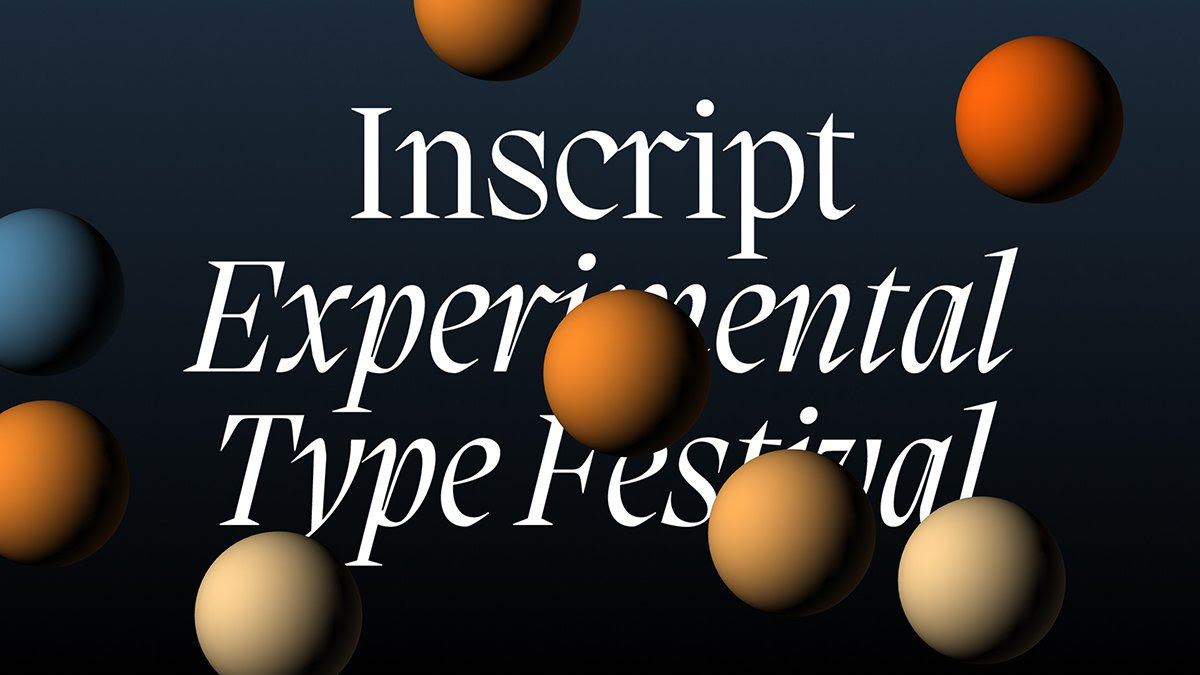
The inaugural experimental type festival ‘Inscript’ took place online from 12-16 October 2022, when across five days of talks, demonstrations and portfolio presentations, virtual attendees could engage in new ways of working with typography and type design, writes Gabriela Matuszyk.
Moderated by Ksenya Samarskaya, managing director of Type Director’s Club (TDC), and put on by the Inscript Collective, the event attracted almost 1300 visitors, all of whom can access video recordings of the talks in the six months after the event. With 30 speakers, the festival showed the many new ways type can be explored through technology, including artificial intelligence, augmented and virtual realities, creative coding, physical computing, and innovative use of traditional craft.
Yehwan Song’s experimental approach to interacting with interfaces.
Top. Inscript Festival 2022 identity.
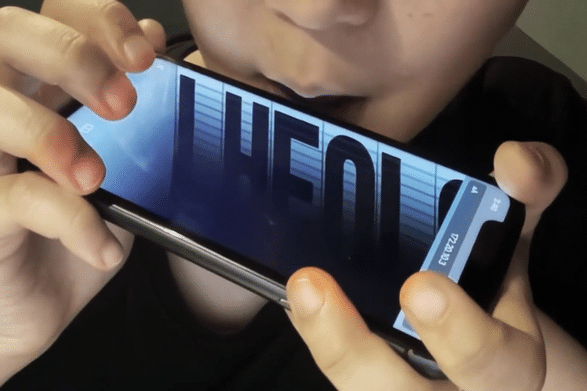
When introducing the programme, Samarskaya emphasised the event’s exploratory framework, focusing on thinking through tools ‘for experimenting and imagining what is possible’, and not being afraid to make mistakes to push typographic advancements.
The opening talk by Yehang Yin, who specialises in designing and computing type, was a thorough and technical overview of different artificial intelligence (AI) models for generating CJK (Chinese, Japanese, Korean) characters. As these writing systems are non-linear and highly complex, CJK fonts, due to their laborious and expensive design process, are hardly ever complete. In response, Yin conducted a series of experiments using image-to-image translations to generate nonexistent Chinese characters, and later, to animate them playfully (see below)
Yehang Yin generated nonexistent hanzi, here circling from one word to another:
goose > me > goose > bird.
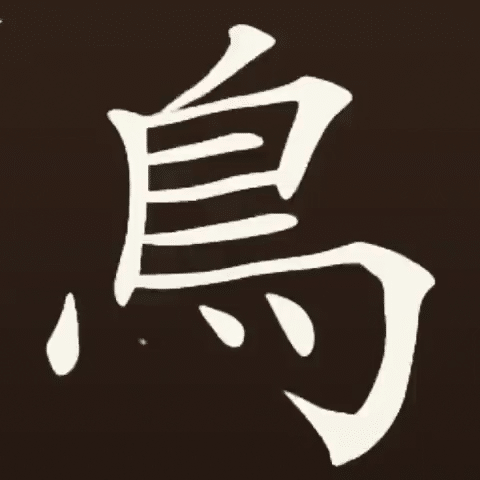
Research projects like this present interesting potential for type foundries and designers who may take years to develop comprehensive, multi-lingual superfamilies (such as Oli Grotesk featured in ‘Design for a better world’ in Eye 102). However, they do pose questions about choosing the right source materials as teaching blocks for AI.
Designer Dev Valladares introduced his method for creating a dataset to teach typography to AI, by gathering all the letters from all the fonts that were available on his computer. He was then able to use ‘Lucid Sonic Dreams’, a type of GAN machine learning model, to make the newly generated type react to sound.
Experiments in audio-reactive machine learning generated typography by Dev Valladares.
Multidisciplinary designer Gianpaolo Tucci shared his intricate typographic experiments produced with AI generators and machine learning (ML) technologies. He spoke of ‘embracing imperfections’ and ‘moving away from typographic rigour’ in order to create unique letterforms. In a presentation rich with examples and iterations, Tucci generously explained his strategies for writing prompts, such as ‘contamination’ (combining three different references) or ‘message’ (semiotics). He also included a detailed breakdown of the syntax structure for prompts, which can prove especially useful for those who plan on experimenting with AI generators themselves.
Gianpaolo Tucci’s letterforms generated by ‘contaminating’ three references together in a prompt: human body parts in decay; Imagined, sculptures by Rick Owens; and concrete.
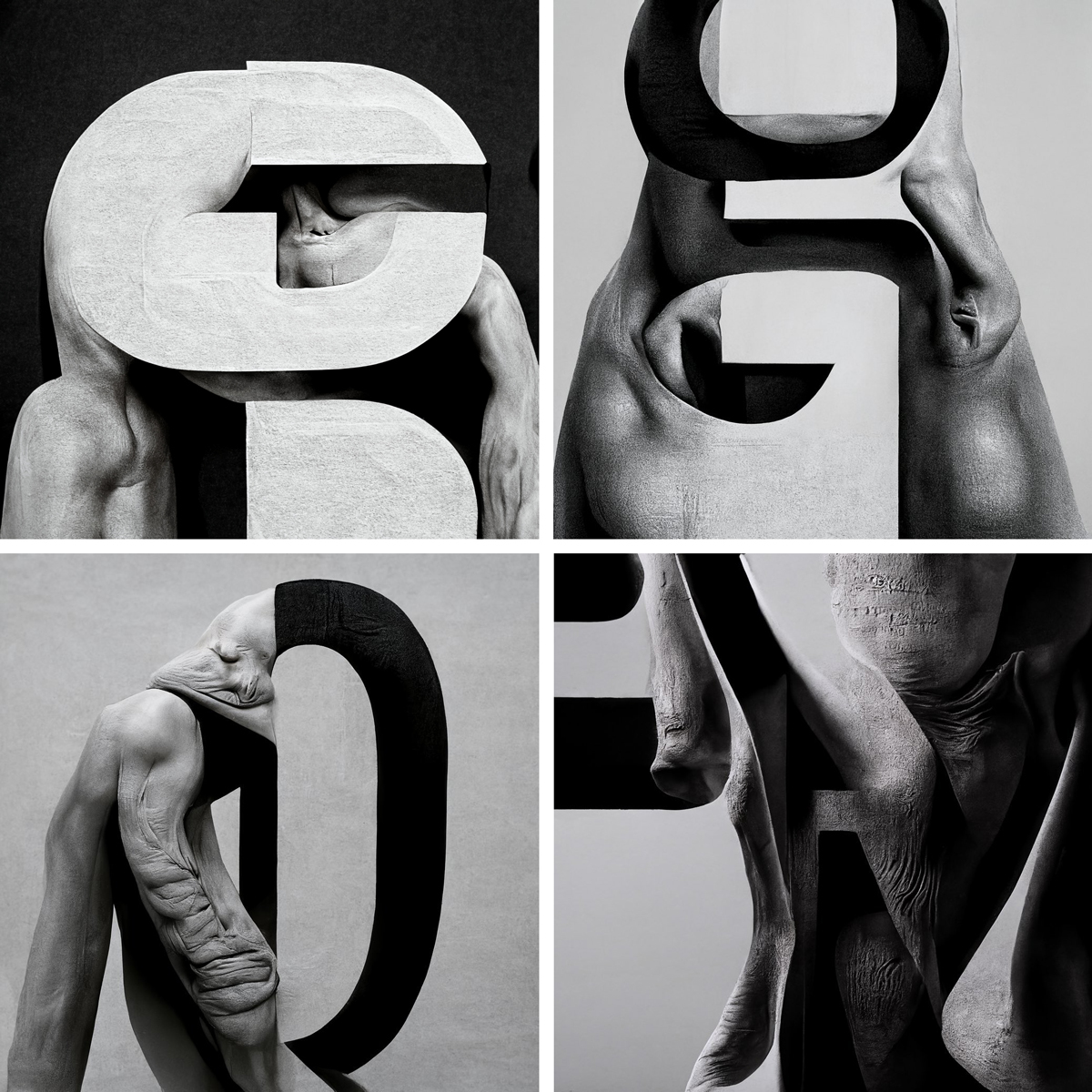
A different approach to the way external outputs can shape the formation of type was presented by Eino Korkala and Daniel Coull in their open-source Climate Crisis font. Commissioned by Helsingin Sanomat newspaper, the variable type responds to data of Arctic sea ice levels, progressively ‘melting away’ with different weights. Since its launch, the font has been expanded by Eunyou Noh and Joohee Lee, who designed additional 2780 Korean Hangul characters in an attempt to raise public awareness about climate change.
Climate Crisis font, by Eino Korkala and Daniel Coull, melts away in line with Arctic sea ice levels data.
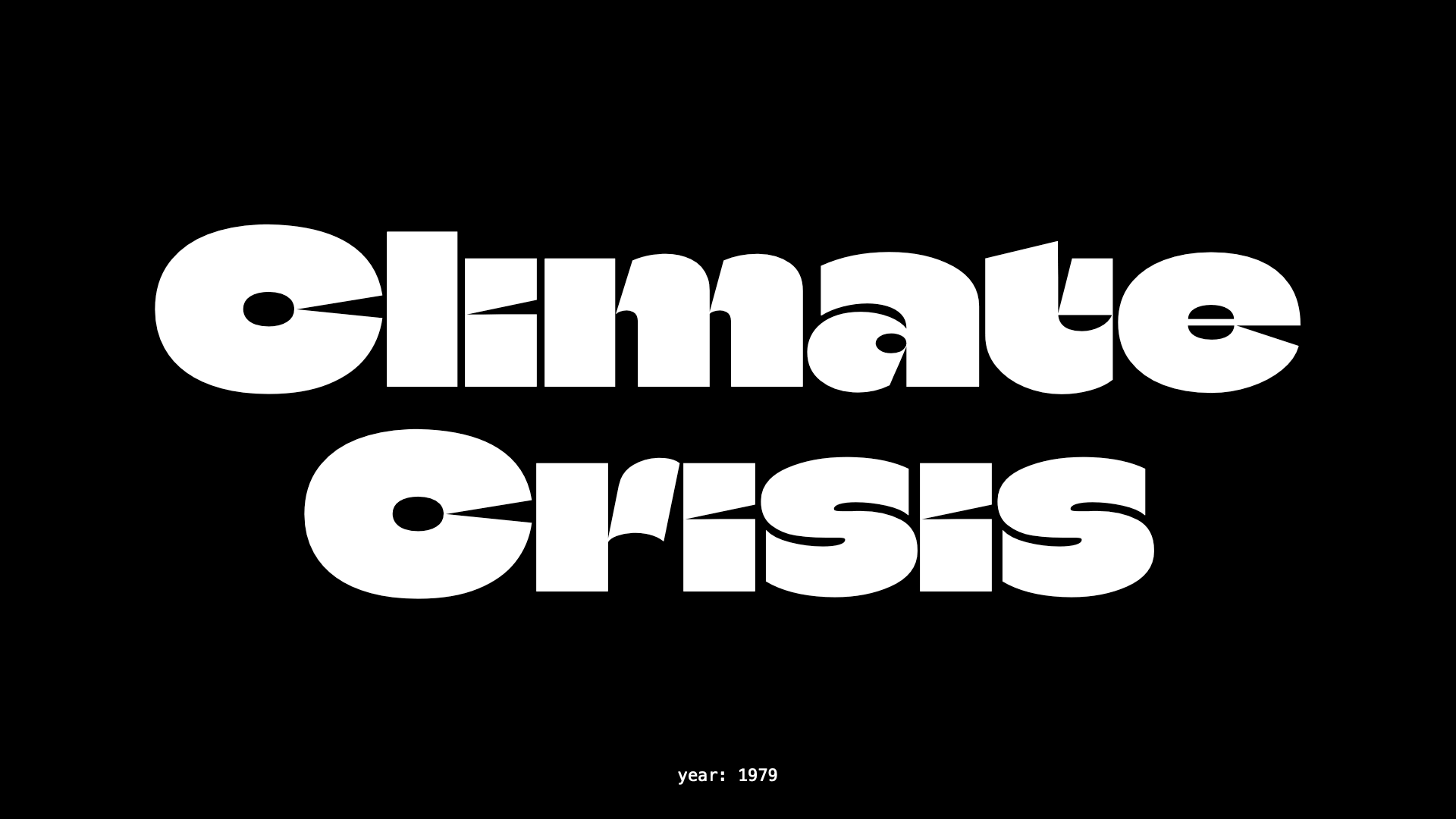
One theme present in almost all of the talks was the shift from output-driven process to procedural workflows. Akiem Helming and Bas Jacobs from Underware (see ‘Outlook variable’ on the Eye blog) revealed the fluctuations in how they approached designing type in line with technological advancements. The German-Dutch duo gave an informative presentation about the transformation from static to dynamic outputs by exploring the term ‘grammatography’ and its relationship with type formation, as well as the distinction between the tool, the person [designer] and the creation.
Liza Y by Underware. Originally presented at the exhibition From typography to grammatography, Print Gallery Tokyo, 2019.
The festival did not only focus on digital technologies – a plethora of talks featured examples of building new or hacking existing tools and mediums, as well as re-appropriating analogous methods of production. In one of the projects shared by Vera van de Seyp titled A guide to softer ware, she reprogrammed a 1980s knitting machine in order to produce tapestries that commented on issues relating to gender roles. Designer Yehwan Song took a different approach, where by questioning the interactions with our phones, she proposed new ways of using them.
Other tools built by practitioners included: Cold Type, an open-source Python library for programming animated display typography by Rob Stenson; Space Type Generator, a kinetic type generator by Kiel Mutschelknaus (see Eye 100); and ASCII Playground, which allows you to experiment with text-based animations by Andreas Gysin.
A tapestry from A guide to softer ware by Vera van de Seyp, made by hacking a knitting machine.
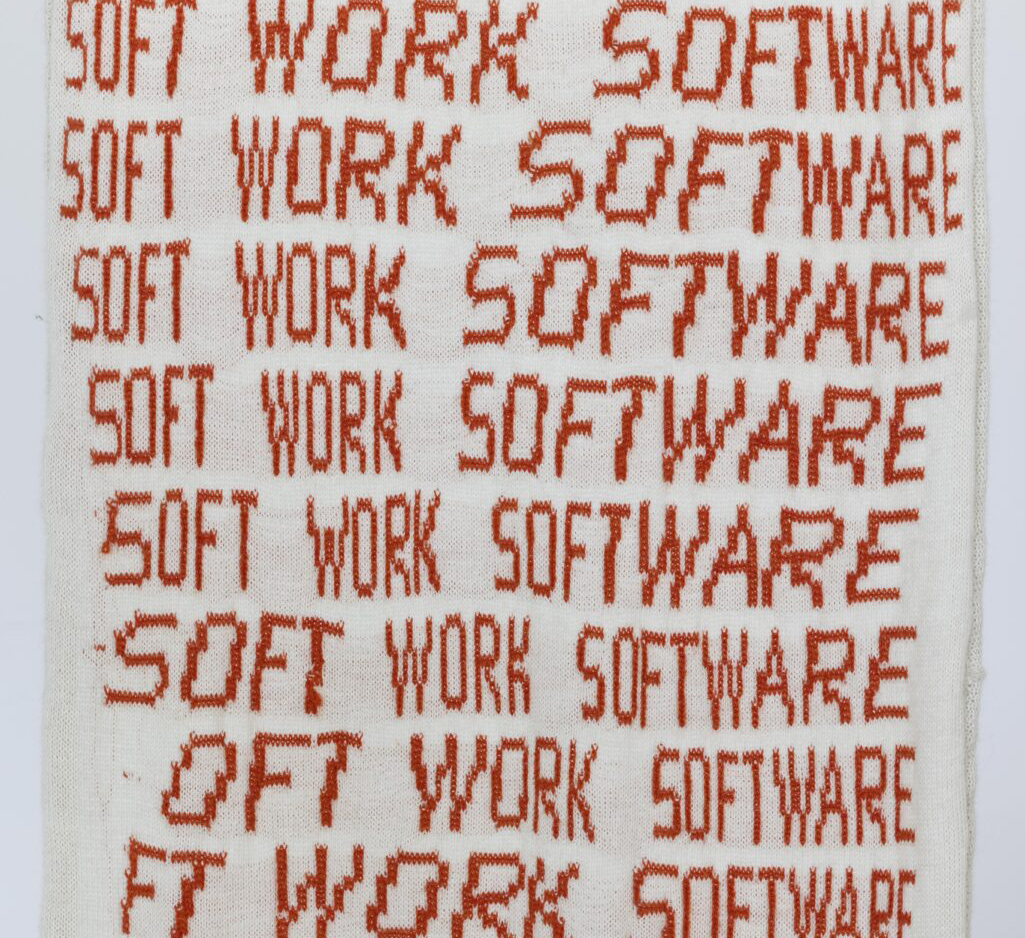
For me, the most compelling aspect of ‘Inscript’ was its accessibility. While it can be daunting for some to engage in talks or conferences that focus on new technologies, you did not have to be an expert in coding or programming to understand the opportunities these tools offer. The presentations included numerous demonstrations explaining the processes and thinking that went with each stage of design. A practical example of procedural workflows in action, presented by Dennis Hölscher, was particularly insightful in shifting away from output-driven or process-led approaches.
Learning about the possibilities of such new technologies, as well as different modes of working, is essential to maintaining an evolved and responsive design practice. This approach encourages freedom from the constraints of singular programs or processes – a necessity in our age of subscription-led software monopolies (see ‘The programmed designer’ in Eye 94). The experimental tone of ‘Inscript’ left me feeling exhilarated, liberated and impatient to try new these tools and methods in my own work.
The festival is due to return in 2023, with an expanded programme and new initiatives.
Gabriela Matuszyk, designer, writer, editor, London.
Eye is the world’s most beautiful and collectable graphic design journal, published for professional designers, students and anyone interested in critical, informed writing about graphic design and visual culture. It is available from all good design bookshops and online at the Eye shop, where you can buy subscriptions and single issues.
Links
Inscript Experimental Type Festival
Ksenya Samarskaya
Yehang Yin
Dev Valladares
Experimental Typography Archive by Gianpaolo Tucci
Climate Crisis font by Eino Korkala and Daniel Coull
Hangul version of Climate Crisis font by Noh type
Case study: Grammatography – by Underware
Vera van de Seyp
Yehwan Song
Cold Type by Rob Stenson
Space Type Generator by Kiel D. Mutschelknaus
ASCII Playground by Andreas Gysin
Dennis Hölscher
